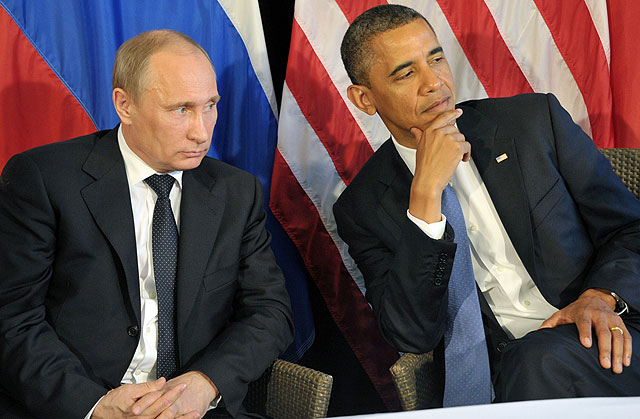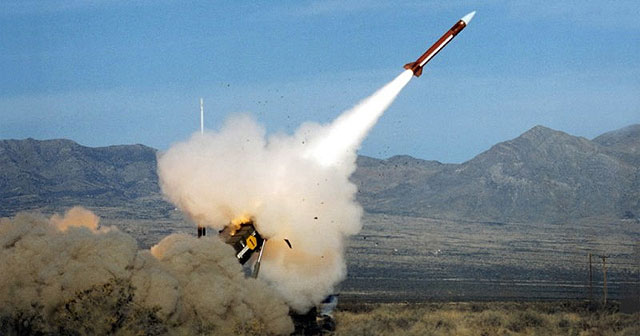In April, White House National Security Advisor Tom Donilon brought a message from U.S. President Barack Obama to Vladimir Putin, the purpose of which was to help pave the way for a new mode of cooperation between Russia and the United States. In late May, Russian Security Council Secretary Nikolai Patrushev handed over Putin’s response to Obama. Political analyst Tatiana Stanovaya argues that progress in missile defense would mark a breakthrough in Russian-American relations.

Missile defense is a key issue in U.S.-Russia relations—but only in the eyes of the Kremlin. The U.S. withdrawal from the Anti-Ballistic Missile treaty in 2001 highlighted the widening gulf between the two powers: Washington made a decision without considering the Kremlin’s opinion, which resulted in Moscow feeling offended and vulnerable. Since then, Russian-American relations have been marked by an enduring coldness. The tension increased in the early 2000s with the outbreak of pro-democracy “color revolutions” in former Soviet republics: Believing that Washington was trying to squeeze Russia out of its traditional spheres of influence, the Kremlin became increasingly sensitive about its longstanding competition with the United States. As a result, the Kremlin interpreted any geopolitical or economic expansion of the U.S. in terms of the hypothetical military opportunities it might create for America.
In 2007, after Putin’s well-remembered speech in Munich, in which he accused the U.S. of undermining global stability, the Kremlin considerably toughened its rhetoric. Moscow demanded that a modified treaty on Conventional Armed Forces in Europe be ratified; threatened to point Russian missiles toward Europe; and started new missile tests, among other controversial moves that included halting the liquidation of three regiments of the 28th Guards Rocket Division in Kolzelsk. Kozelsk has 46 operational silo launchers for RS-18 intercontinental ballistic missiles (ICBMs). The division is now being reequipped. Moscow also promised to deploy Iskander-M tactical ballistic missile system complexes to the Kaliningrad region. These missiles could reach targets anywhere in Poland, where the U.S. had plans to establish a ground-based interceptor missile complex. According to the Russian military, they could also neutralize, if necessary, the American missile defense. The defense ministry claimed that by 2015, military forces in the Kaliningrad Region would be equipped with new Iskander-M systems.
The United States is guided by neither the wishes nor the concerns of Moscow, but by its own understanding of national security.
To a large extent, Washington is responsible for Moscow’s tough, almost hysterical position on missile defense. In its defense decisions, the United States is guided by neither the wishes nor the concerns of Moscow, but by its own domestic needs and its understanding of national security. In this situation, Russia has almost no leverage with the U.S. The want of instruments of influence generates the sharpness of Kremlin rhetoric.
The progress of U.S.-Russia talks on missile defense depends on the situation in the United States as well. Under President George W. Bush, dialogue on this topic was strained and unsuccessful. The United States insisted that its missile defense project to place interceptors in Poland and accompanying radar in the Czech Republic was not directed against Russia but against the Iranian threat. Moscow did not believe it and pointed out that the European missile defense system would make its territory “transparent” up to the Ural Mountains and would automatically reduce Russia’s deterrence capability. As a result, in the second half of 2008, the bilateral relations crisis came to a boil. New Russian President Dmitri Medvedev made it clear that Bush’s policy would not lead anywhere and that Moscow could see no way to move forward with negotiations.
A chance to change the situation came (and was acted on) when Barack Obama was elected U.S. president and the global financial crisis hit the world. The Czech government was also unable to bring itself to send the missile defense treaty to Parliament for ratification. Now the United States started reviewing the missile defense project from different angles: that is, from the point of view of the Iranian threat, economic expediency, and military efficiency. The opportunity to “reset” relations with Russia and the pressure on the Obama administration to show some progress with regard to Afghanistan and Iran demanded that the U.S. take more serious measures to ease Moscow’s concern.
This marked a milestone in bilateral relations. Despite difficult negotiations, the countries signed the New START Treaty. The success of this agreement was limited, however, because Moscow still has not solved its primary problem. The Kremlin did everything in its power to make the White House include in the treaty a preamble that would legally guarantee that U.S. missile defense would not target Russia. In other words, it would give Russia the right to veto the U.S. deployment of missile defense in Europe. Washington considered this condition impossible and the negotiations revolved around the general connection between offensive and defensive weapons, which still provoked heated criticism within the U.S.
As a result, Russia and the U.S. still interpret the treaty differently. The United States maintains that the “Treaty does not contain any constraints on testing, development or deployment of current or planned U.S. missile defense programs or current or planned United States long-range conventional strike capabilities.” Medvedev’s press service claimed that the New START Treaty legally formalized the link between strategic offensive and defensive weapons. The vulnerability of Moscow’s position is compensated for by the document’s stipulation that Russia has the right to withdraw from the treaty if it feels that the other party’s decisions with regard to missile defense are in violation of Russia’s security interests.
In reality, Moscow realized all too well that the New START Treaty did not solve the problem of missile defense. During the following three years, the Kremlin made attempts to compel the United States to sign a separate legal document that would guarantee that American missiles would not target Russia, and force Europe and NATO (with the influence the U.S. held and Moscow lacked) into discussing a new European security project, under which Russia was promoting a unified missile defense system.

NATO rejected such a possibility and did not show any enthusiasm for Moscow’s proposal to create a missile defense system based on sectors, according to which the countries would “cover” one another within the framework of the responsibilities of one’s sector. The Kremlin considered this a mutually convenient compromise, since neither NATO nor Russia was prepared to let anyone get close to its missile defense systems. “It will be a different matter if all instruments, such as sensors, radars, interceptors aim outward and are not located at the line of demarcation of the Russian Federation and the Alliance. In this case, we would be assured that European missile defense does not target the sector engagement zone of Russian nuclear forces,” Kommersant sources in the Russian foreign ministry said. Nevertheless, neither NATO nor the United States was interested in this proposition.
Moscow’s last chance consists in compelling the United States to sign yet another legally binding document that would guarantee that the U.S. missile defense shield will not target Russian territory. The odds of this happening seem to have increased. First of all, the United States declined to implement the fourth phase of missile defense deployment, which the Kremlin considered the most threatening. Phase 1 consists of a sustained deployment of an Aegis BMD-capable multi-role ship and the deployment of AN/TPY-2 radar. Its objective is to cover Europe along with American bases located there. Phase 2 (envisioned for completion in 2015) consists of deployment of the SM-3 Block IB interceptor combined with BMD-capable ships, which will expand the coverage of the European missile defense system. Phase 3 (planned for implementation in the 2018 timeframe) concludes the tests and makes operational SM-3 Block IIA interceptors capable of destroying medium-range missiles. Phase 4 (which was supposed to be implemented in the 2020 timeframe) would have consisted of deployment of the SM-3 Block IIB for protection against medium- and intermediate-range missiles and the potential future ICBM threat to the United States.
Washington’s decision not to proceed with Phase 4 came as a positive sign to Moscow. But the Kremlin does not think this is sufficient, since such this decision can always be reviewed and reversed. Still, the move alleviates tensions between the two powers and encourages further dialogue.
The Russian foreign ministry and sources close to Putin are sometimes saying that the U.
Secondly, the United States is prepared to sign a legally binding document guaranteeing that U.S. missiles will not target Russia, although only as an executive agreement. In 1937 the U.S. Supreme Court ruled that executive agreements have the same force as treaties approved by the Senate. According to Kommersant sources in the U.S. Department of State, Washington proposes to secure through this document the parties’ dedication to cooperation in the sphere of missile defense and non-usage of their military potential against one another. The agreement would also contain specific measures aimed at enhancing confidence, such as mechanisms of mutual notification and information exchange, joint exercise, and threat assessment. The problem, though, is that these are only President Obama’s personal guarantees. Any subsequent president can revoke his decision.
The Kremlin is not yet sure what its reaction to the White House’s proposal should be. It could take advantage of the U.S.’s softening of its position to push through a stronger agreement. Or it could choose to take a milder approach and respond to the overture, which would create more opportunities and better conditions for mutual concessions in the future. The Russian foreign ministry and sources close to Putin have been sending conflicting signals, sometimes saying that the U.S. proposal is acceptable, and sometimes accusing Washington of a lack of political will.
At the end of May, Russian Security Council Secretary Nikolai Patrushev handed over Putin’s response to Obama’s National Security Advisor, Tom Donilon. For the time being, the parties are exchanging signals, comparing their positions, and examining the limits of possible concessions. Political will alone is not sufficient; the governments of both countries face a new sort of domestic challenge. The uncertainty of Obama’s approval ratings in the United States and a sharp trend toward a toughening of Putin’s regime will put diplomats’ efforts to the test.

